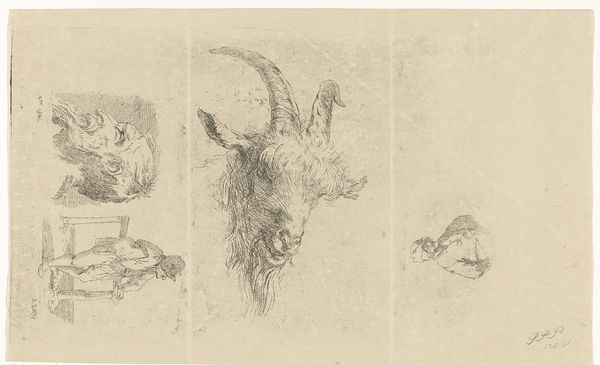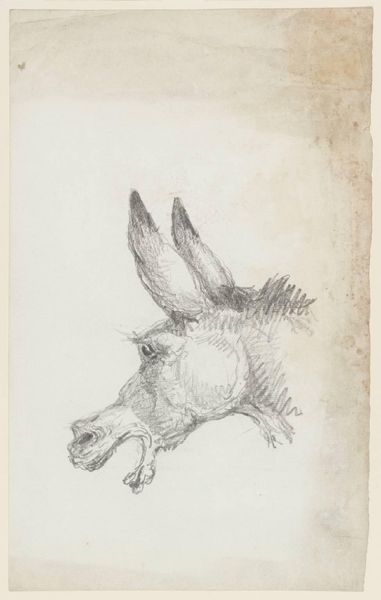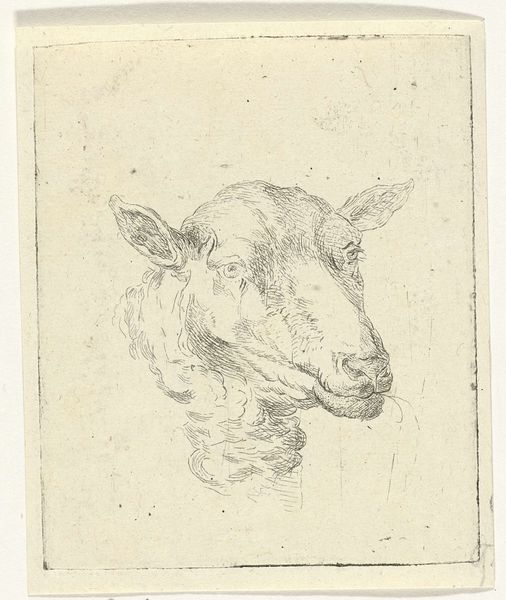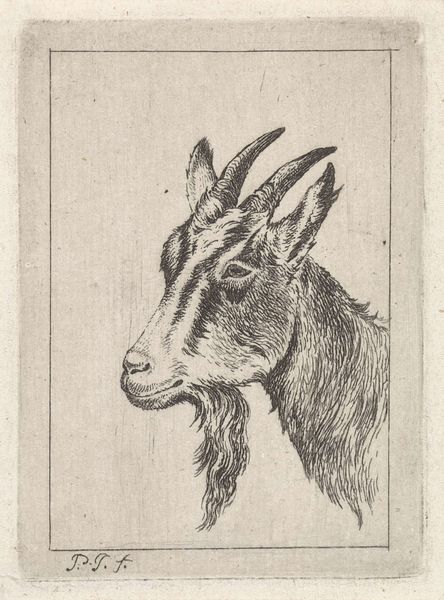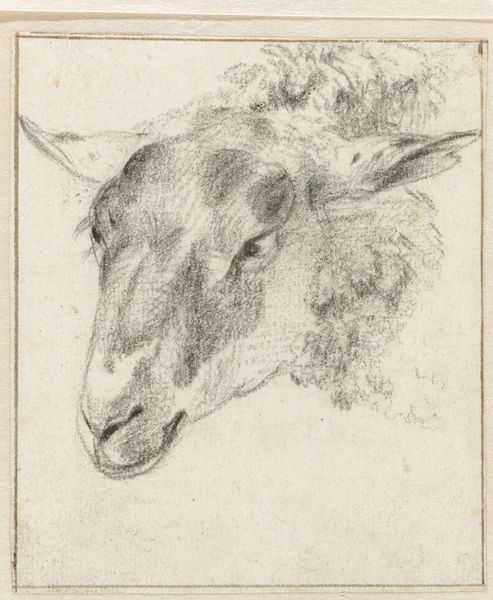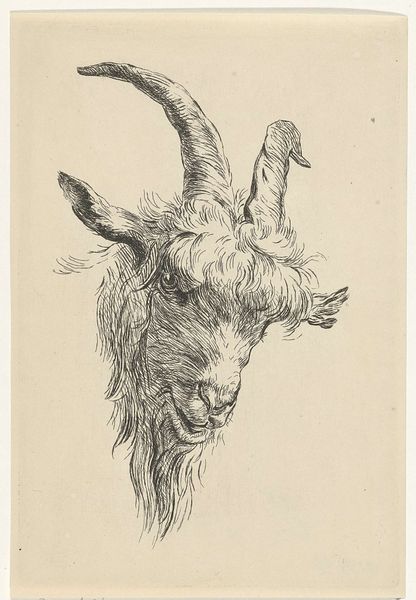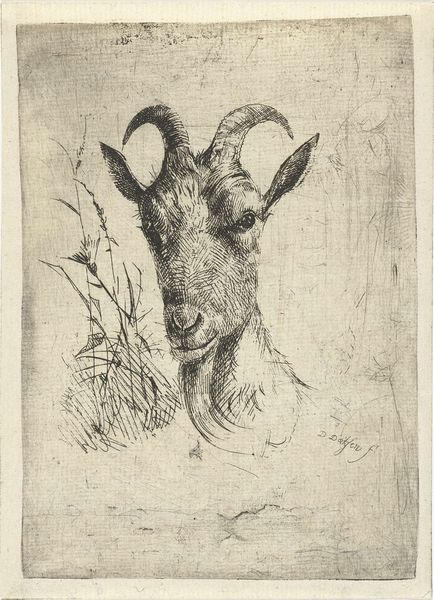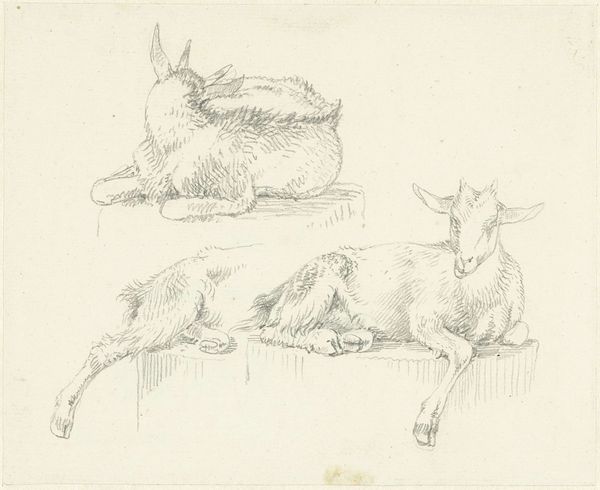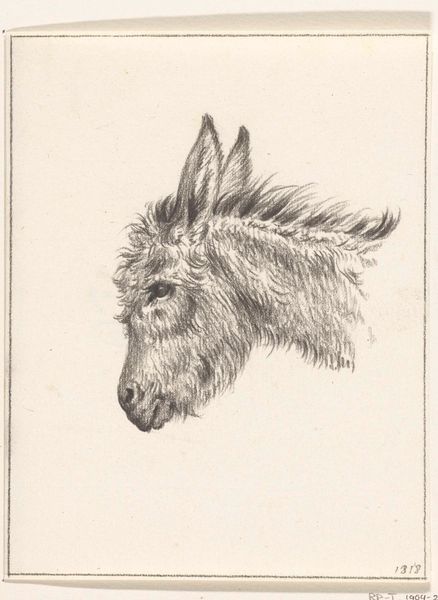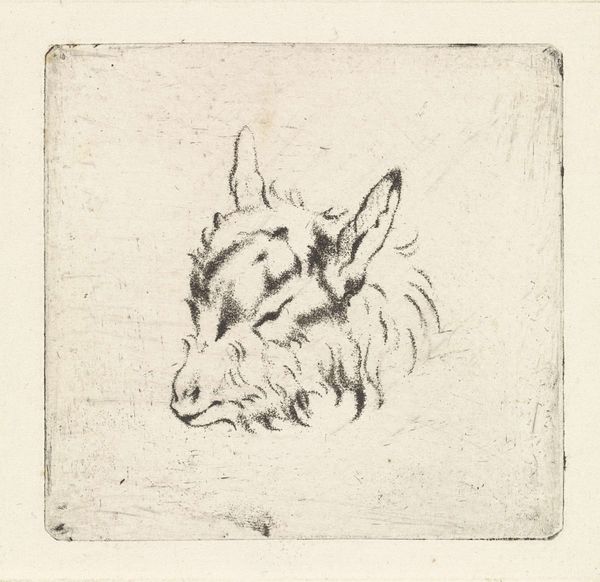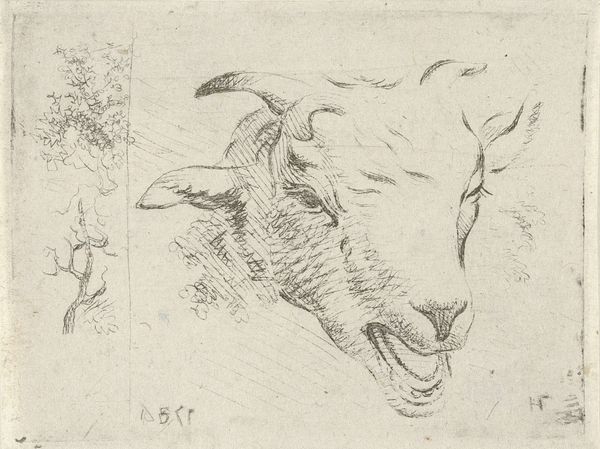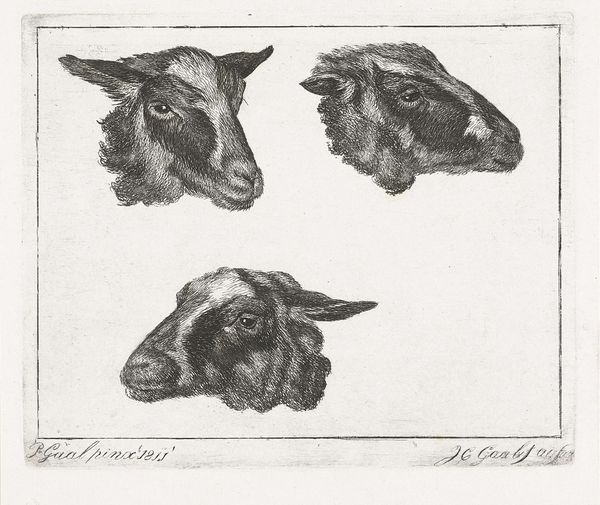
drawing, ink, pen, frottage
#
portrait
#
drawing
#
animal
#
pen sketch
#
pencil sketch
#
ink
#
pen
#
frottage
#
realism
Dimensions: height 141 mm, width 50 mm
Copyright: Rijks Museum: Open Domain
Curator: Standing before us is Pieter Janson’s "Bokkenkop," created sometime between 1780 and 1851. It's an ink drawing featuring two studies of a goat's head. What's your immediate impression? Editor: Bleak, almost mournful. The sharp lines and the stark contrast between the ink and the paper create a sense of isolation, even in the presence of two subjects. Are we sure of the attribution and dating? It feels like something from a very particular social context. Curator: While not definitively proven, stylistic analysis points towards Janson’s hand, considering his penchant for detailed animal studies during that period. He often used pen and ink to capture the textures and forms he observed in nature and likely employing frottage techniques to create shading and depth in the drawings. Editor: I see that texture, a really clever bit of manipulation, but thinking about this practically, whose gaze does this serve? Was Janson capturing the goat as an ideal of pastoral life, or is there something darker at play, perhaps reflecting the era's rigid social hierarchies? We need to contextualize these representations. Curator: Interesting perspective! I tend to focus on the meticulous rendering of the animal's anatomy—the musculature, the texture of the hair, even the subtle differences between the two heads suggesting Janson was concerned with accurately representing material reality through form. Editor: Yes, but what reality are we constructing here? The artist chose to immortalize this particular creature. Were goats somehow symbolic, tied to labor, to land ownership, to folklore? We have to explore those narratives to truly understand the piece beyond its purely aesthetic qualities. Curator: I can appreciate the layered meanings one might find! I’m equally captivated by the craftsmanship—the skill in rendering such detail with just pen and ink. I consider it the intersection of scientific observation and artistic skill, typical for the time period. Editor: And I'm thinking, where did that skill come from? Who taught Janson? What resources did he have access to? We have to remember that the story of art history isn't just about individual genius. Curator: A fair point to note, the artwork becomes a point to reflect on historical processes beyond what the artwork is in isolation. Editor: Exactly. "Bokkenkop," seemingly simple in its depiction, encourages us to unravel these questions. It becomes a focal point of not just art, but society and how its values were perpetuated.
Comments
No comments
Be the first to comment and join the conversation on the ultimate creative platform.
